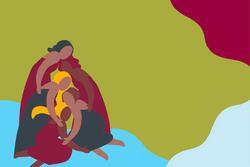Review: "The Jews Of Summer" by Sandra Fox
As a child growing up in a predominantly Protestant town, I was never heavily involved in the Jewish community, and instead chose to attend an all-girls YMCA camp five years in a row. Back at home in Rhode Island, I opted out of starting Hebrew study and the bat mitzvah process. But, when I became a counselor at age 17 at Camp Young Judaea in southern New Hampshire, where my dad, uncles, aunt, and cousins went, I learned to embrace my Jewish identity. Camp Young Judaea’s Shabbat traditions, symbolic use of Hebrew, and music empowered me to identify with the religion of my ethnicity and heritage, in which I’d previously taken little interest.
Connecting to my Jewish identity through summer camp was not a one-off experience, but was instead a cultural phenomenon, as explored in a new book, The Jews of Summer: Summer Camp and Jewish Culture in Postwar America by Sandra Fox. Jewish summer camp is a historical force, created intentionally to bolster and protect Jewish community and identity.
The Jews of Summer is the first academic history book to offer a cover-to-cover history of Jewish summer camps in the twentieth-century United States. Jewish summer camp has become an integral part of Jewish identity formation, and Sandra Fox proves through her research that this was no accident. It was deliberately shaped to be this way by Jewish adults, children, and especially the 17, 18, and 19-year-olds navigating the boundaries between adulthood and childhood.
Furthermore, Fox argues that during the summer before their last year of high school or the beginning years of college, teenagers actively navigate these boundaries, and in the process, reshape the identities of their communities and themselves.
Fox divides her book into eight chapters: the emergence of summer camps, the 1940s through 1960s, the structure of a Jewish week, Tisha B’Av and Holocaust memory, Hebrew and Yiddish, democratic education, camp romances, and the 1970s through today.
The Jews of Summer focuses on Yiddish, Zionist, Reform, and Conservative camps. Fluent in Yiddish and host of Vaybertaytsh: A Feminist Podcast in Yiddish, Sandra Fox shines as a cultural historian of Yiddish. Her research explores how Yiddish camps used the language to build community and shape identity. Also fluent in Hebrew, Fox compares Yiddish camps’ use of their language with Zionist camps’ use of Hebrew, arguing that within American-Jewish summer camps, the languages evolved to become more symbolic.
After reading The Jews of Summer I began to understand how my Zionist camp left me feeling a powerful connection to a language that I don’t know. My knowledge of the Hebrew alphabet correlated to the four age groups at camp: Aleph, Bet, Gimmel, and Daled. Oneg meant an all-staff gathering on Friday night with good food and without technology. The phrase modeh ani conveyed the feeling of the first words and opening chords of Saturday morning services in the grove beneath the pines in the cool New Hampshire sun.
The Jews of Summer provides historical context for the songs and sounds of Jewish summer camp, which were so powerful to me. Let’s take my camp’s songbook as an example. “Leaving on a Jet Plane,” “Cats in the Cradle,” and “American Pie” embody the 1960s and 1970s, when American youth culture accelerated the rise of summer camps, and Jewish camps leaned into this. Jewish music such as Reform Jewish rockstar Debbie Friedman’s “L’chi Lach” and “Miriam’s Song”—both from her 1989 “And You Shall Be a Blessing” album—use music to build Jewish identity and cultivate meaning for younger generations. Lyrics and tunes carry out community-building and identity-forming work at camp, seven days a week and especially on Shabbat.
At camp, Shabbat (Hebrew) or Shabbes (Yiddish) is about the rhythm of the week, structuring our sense of time around Friday night and Saturday morning services, and other Shabbat traditions. Further, Fox explains how Friday night rituals—including dressing up for services—and Saturday free time became opportunities for summer camp romances. The second to last chapter, poetically titled “Summer Flings and Fuzzy Rings,” explores how, in addition to typical teenaged activities and the thrill of a summer fling, Jewish camp hookup culture takes on historical meaning.
In the context of “interfaith marriage anxiety,” with fewer Jewish Americans raising Jewish families, summer camp hookup culture contributes toward a future for American Judaism. Even in my own family, my uncle met his wife at camp, and that couple sent both their children there.
The other historical context is more solemn: after the Holocaust, there was heightened pressure in Jewish communities to repopulate the 6 million lost. The Jews of Summer’s subtitle, Summer Camp and Jewish Culture in Postwar America, implies the post-Holocaust context. Tisha B’Av, a somber day to fast and commemorate centuries of persecution, typically falls in early August and becomes part of the rhythm of a Jewish summer at camp. Fox notes how observing Tisha B’av at camp was seen by staff as essential for Jewish education and identity formation.
I regretfully admit that on the morning of Tisha B'Av when I was 18, I told my crush that I "liked" him right before he entered the optional fast. Although this was not the appropriate time, something about it feels typical in the context of Jewish historical memory. My own memory of a summer camp crush took place against a backdrop of remembering tragedy.
Covering enormous ground, The Jews of Summer scratches the surface of the topics of heteronormativity, #metoo, and the Israeli-Palestinian conflict, among other challenging topics in the context of Jewish summer camps. Through lenses of class, gender, race, and more, hopefully this book launches more scholarship on Jewish summer camp in American life.
At a very basic level, I feel like The Jews of Summer captures the essence of camp. Fox explains this feeling so well when she writes that “one camp day = one real world week, one camp week = real world month, one camp month = six real world months.” Though I spent barely twenty weeks of my life in total at Camp Young Judaea, it shaped me as a person and as a Jewish woman. Only a few summers at Camp Young Judaea shaped my identity as much as my four years of college or my six years of graduate school shaped me.
I long associated French philosopher Albert Camus’s line, “in the depth of winter, I found there was, within me, an invincible summer” with summer camp. The Jews of Summer by Sandra Fox offers a burst of that invincible summer.







Were these pictures taken anywhere in Ohio near camp Cardinal? the top pic looks like me or my twin ?!
In reply to Were these pictures taken… by Nora Friedman
Hi Nora,
You will have to check with the publisher or author as to the origin of the cover picture. You can find the book on the publisher's website here: https://www.sup.org/books/title/?id=35390 and the author's website here: https://sandrafox.net/book
Your review is thoughtful and interesting. Intriguing. I am interested in reading "The Jews of Summer". Often I reflect on my own experiences as a camper at three rural southeastern Pennsylvania JYC camps (located near Philadelphia). Those over night camp experiences shaped my Jewish identity in many positive ways. Even today, I draw on those experiences, as I talk about the value of Jewish culture and tradition with my teenage daughter and son. I care deeply about the importance of helping them express their Judaism in ways that give their lives greater meaning. Thank you.